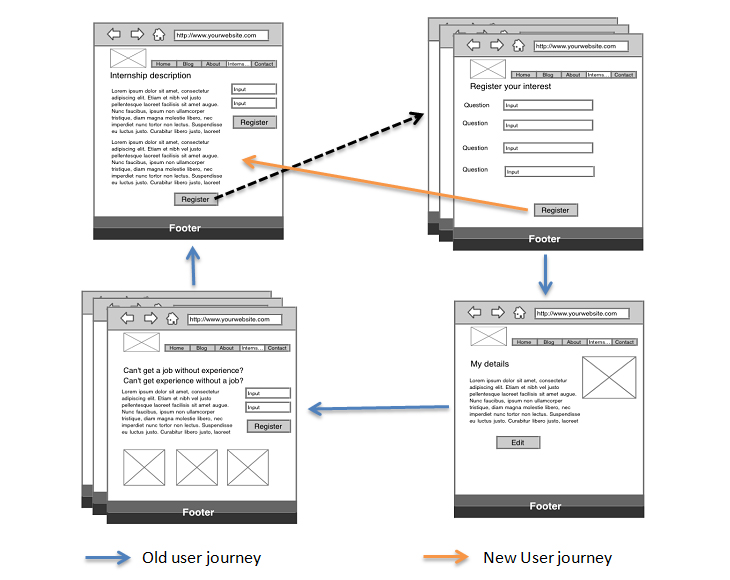The next part of the test was to get our participants using the site. They were given a series of tasks to undertake to see how easy it was for them to complete some of the key actions. It’s important with this type of testing that you don’t lead your users too much. Keeping their actions as natural as possible will yield better results than giving them strict step-by-step instructions. For example, it’s better to say to someone “have a look for an internship that you might be interested in” than to say “search for a programming internship”. The first example is better as it not only allows the user to act in a more natural manner (a designer wouldn’t search for a programming internship for example) but the more open-ended wording is less leading than using a word like ‘search’.
This section of the test was ordered in a similar way to how we would expect people to use the website for the first time. So, we started off by asking our users to find out more about the scheme before encouraging them to register and apply for internships. We made notes during these tests to keep track of what was happening and also gave each task a rating of how difficult each user found it (more on this in the results section).
After our users had completed the task-based section of the test we then asked them some more general questions about how they had found the site. This was to give us an idea of whether they had found it easy to use, whether it contained all the information and functionality that they required and also whether there were any additional comments or ideas that they had.






SHARE THIS PAGE!